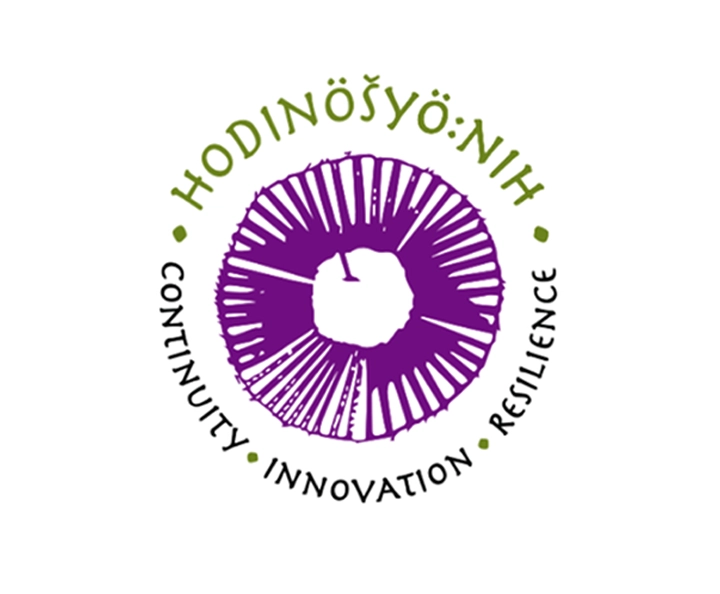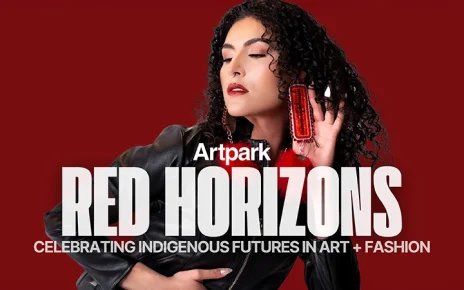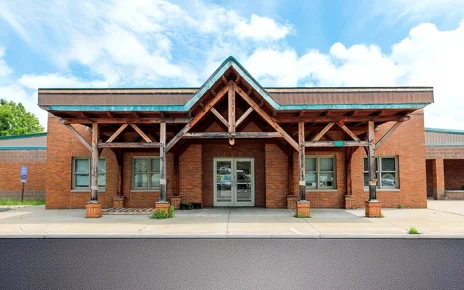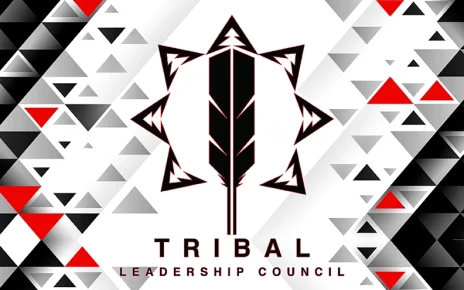at the Rochester Museum & Science Center
The Permanent Art Exhibit Opened on December 6, 2024
By Alyssa Coustenis and Norah Stevens, Newsletter Reporters
The Hodinöšyö:nih: Continuity, Innovation, and Resilience exhibit at the Rochester Museum & Science Center (RMSC), curated by Jamie Jacobs (Tonawanda Seneca, Turtle Clan). Rather than portraying Native peoples as relics of the past, the exhibit showcases contemporary works alongside historical artifacts, emphasizing the ongoing vitality of Haudenosaunee traditions- they are still alive and well. This exhibit features Hayden Haynes (Seneca, Deer Clan), and Kyle Dowdy Jr. (Tuscarora, Bear Clan).
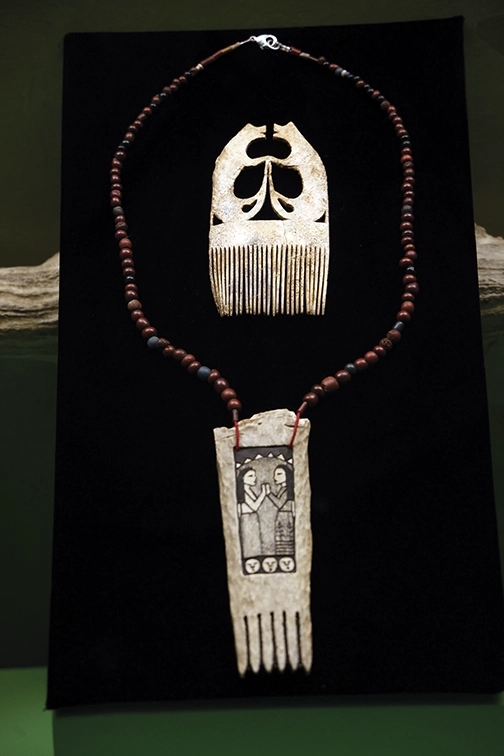
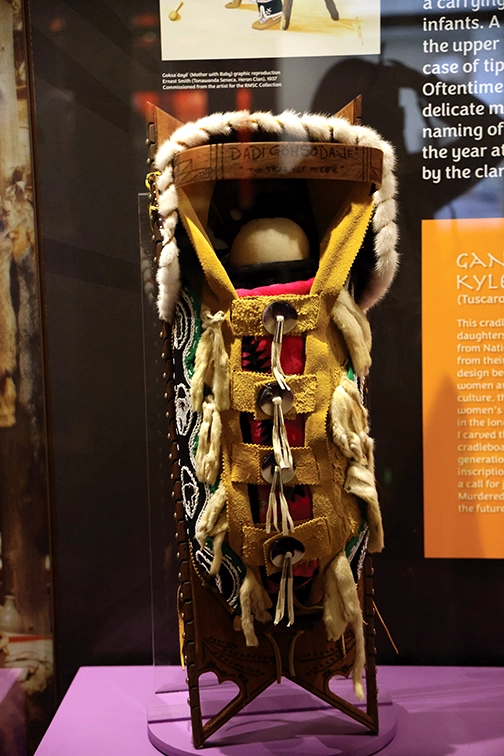
Hayden Haynes had an amazing opportunity while at the RMSC on a visit for a project. At a research visit to the RMSC, Haynes was looking at the old Seneca ancestor-made combs in the collections of the Rock Foundation. While viewing them he noticed some rectangular antler pieces that were recovered from Ganondagan State Historic Site. Haynes realized they were the start of antler combs that were never finished. He then got the idea of asking the Museum and Curator if they would allow him to finish one of the combs. Permission was given and Hayden got started on the process of reworking a 300+ year old antler carved comb. Nervous after observing the feasibility of the piece, a sense of how meticulous the project would begin to set in. Along with the magnitude of this being a “first of its kind” project Haynes embraced the hardships and got to work. He knew he didn’t want his part of this collaboration to be contemporary and knew with his designs he wanted to honor the ancestors who started the piece. Modern technology and tools were used in the process of finishing the antler comb. Haynes believes that our ancestors were always adapting and embracing new technology. For instance, the usage of steel knives, brass kettles, and glass beads after being introduced to these new tools. The composition was completed and is on display at the RMSC.
When asked if Hayden has any upcoming projects, he shared with SNI Newsletter the unveiling of his new upcoming project. With the assistance of a grant from the Walker Youngbird Foundation – A foundation that strives to create a world where Native Artist can reshape cultural perceptions, preserve heritage, and drive societal changes through artistic innovation, founded by Reid Walker (Member of Mandan, Hidatsa, and Arikara Nation of North Dakota). Hayden’s newest creative venture will combine his art along with photography being featured in series of 8 clan comb necklaces, each one representing a clan from our Seneca clan system all created by Hayden. Then each necklace will be worn by the corresponding name holder for each clan from the Ohi:yo’ Longhouse. Hayden wants to honor and highlight exactly who these women are, the title they hold and which clan they belong too. He believes it is important to document this and is paying homage from Carson Waterman’s paintings from 1992 which is a series of eight paintings depicting the Longhouse Clan Mothers at that current time in history. Haynes mentioned that with each of his projects or collaborations he tries to do one in Cattaraugus, then one in Allegany, alternating to create a healthy balance capturing history through art.
Ganawödiyo Kyle Dowdy Jr., a talented artist from the Tuscarora Nation’s Bear Clan, His latest work, a beautifully crafted cradleboard, is now featured in the Hodinöšyö:nih: Continuity, Innovation, and Resilience exhibit.
The exhibit emphasizes “narrative sovereignty,” a principle that empowers Native artists to share their stories in their own voices. The Rochester Museum & Science Center asked Kyle Dowdy Jr., to create an art piece that honored Missing and Murdered Indigenous Women as well as connecting that to children.
Kyle came up with the idea of making a cradleboard because traditionally, women learned the craft from their mothers and grandmothers, passing down techniques and styles through generations.
“This cradleboard is a tribute to all of the mothers, daughters, granddaughters, sisters, and wives from Native communities who have been taken from their families. I used strawberries in the design because of their sacred connection with women and babies. In my Hodinöšyö:nih: culture, the strawberry plant is considered women’s medicine and babies are named in the longhouse during strawberry season. I carved the braid down both sides of the cradleboard to symbolize strength across generations. The protective bar carries an inscription for “the faces yet to come” as a call for justice in the crisis of Missing and Murdered Indigenous Women upon which the future depends.”, he said.
The first cradleboard Kyle crafted was for the birth of his first daughter 10 years ago. The cradleboard for the exhibit took about 6 months to complete. He credits modern tools like a chisel that helps him craft his work. As well as his father for getting him into art as a young boy. Kyle’s favorite kind of art to make is anything that people are going to use.
Kyle Dowdy Jr. thinks everyone should get into art more, especially children that take a real interest in it. He says it’s hard because everybody has dealt with so much trauma and lost traditions in order to survive. But we have to push through and continue to learn and teach each other, as families and communities. Kyle’s cradleboard stands as a testament to this continuity, bridging generations through art.
The Rochester Museum & Science Center offers free admission to individuals presenting a tribal ID.

